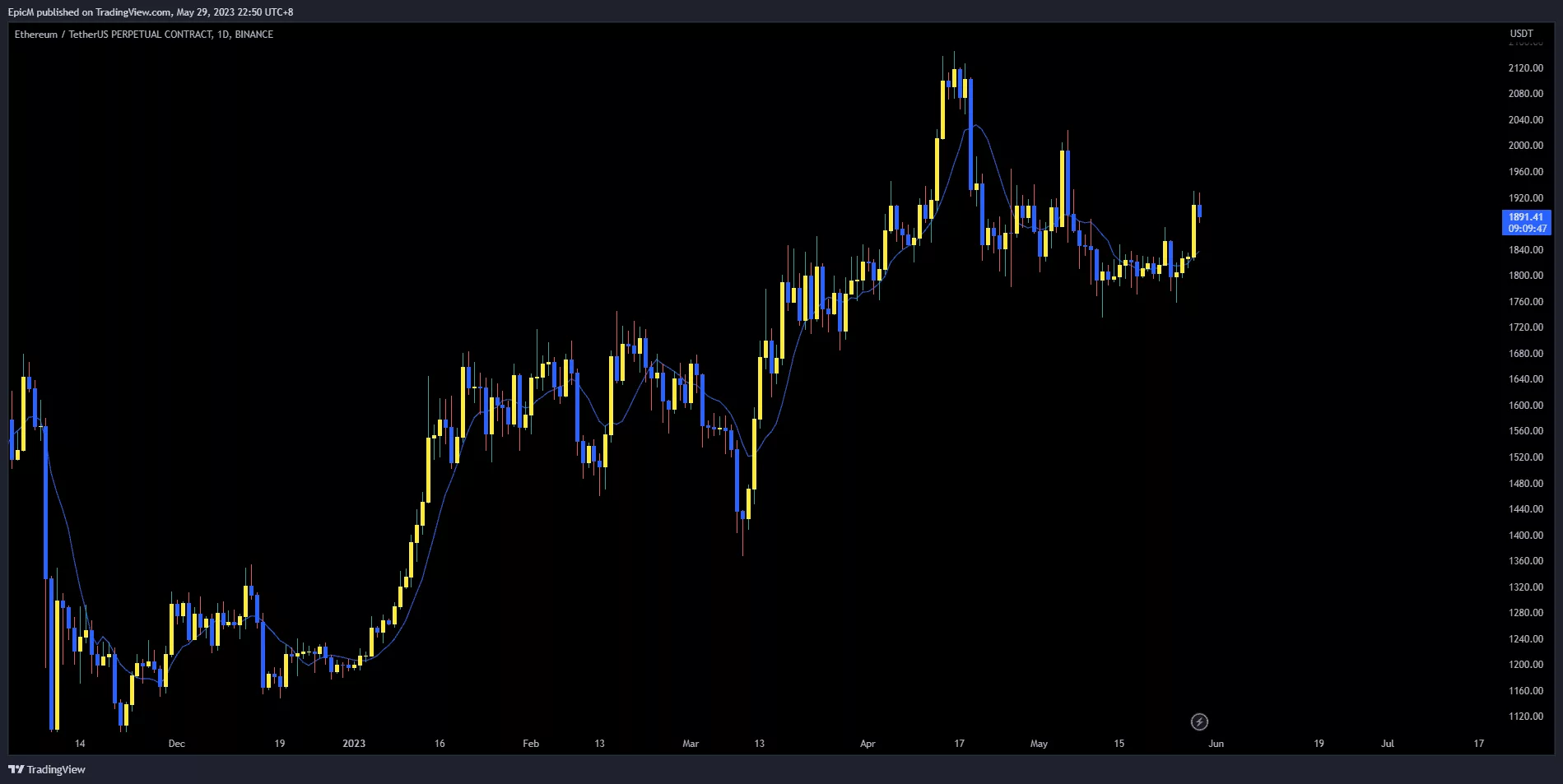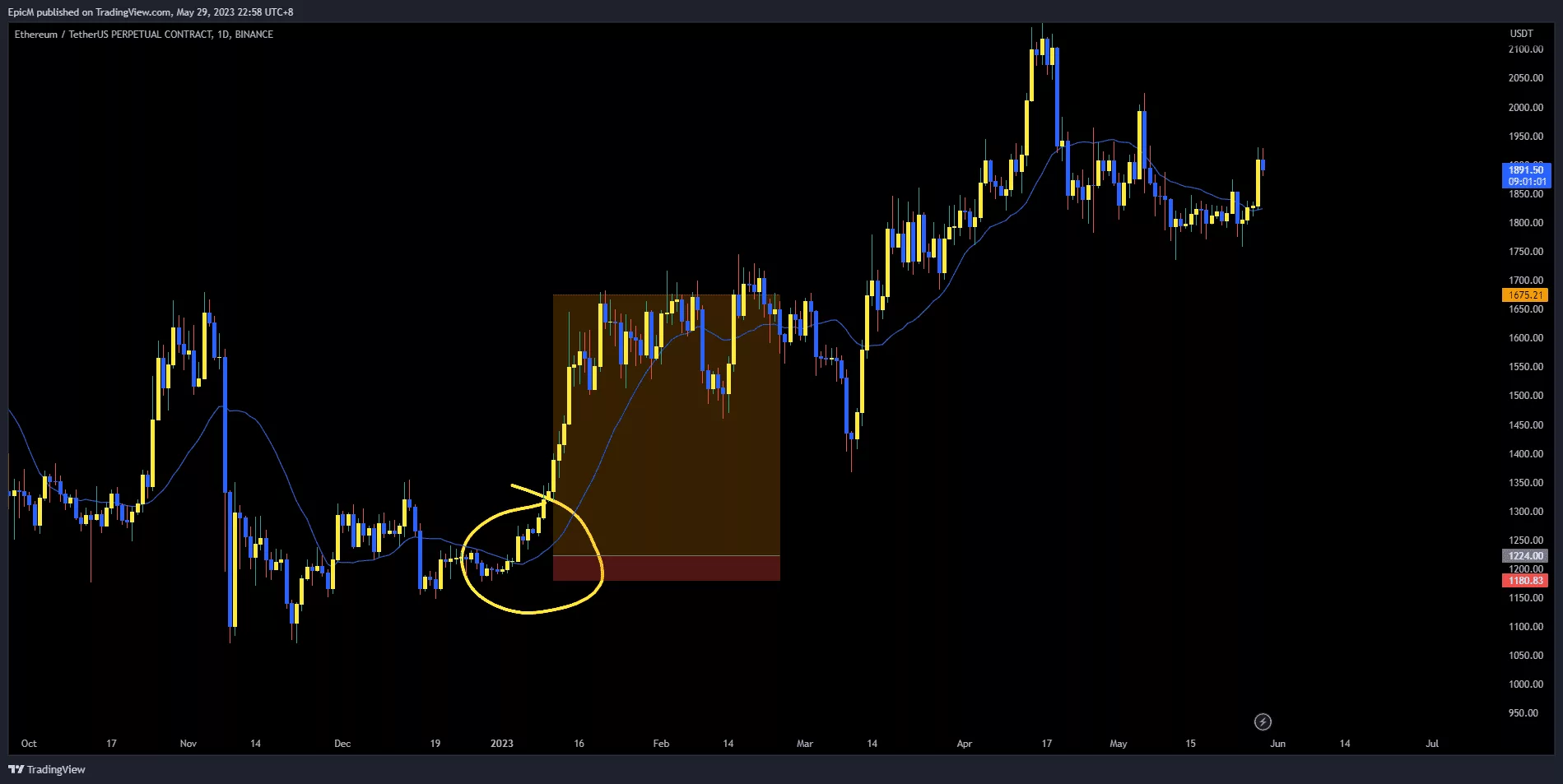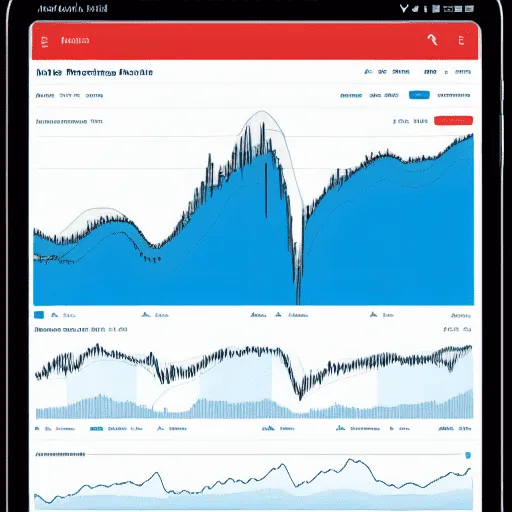Did you ever wonder how some traders continually make gains in the stock market, irrespective of its inherent volatility?
As an experienced trader, I’ve discovered that the key to success in short-term stock trading lies in the effective application of proven strategies. These strategies enable us to identify profitable trading opportunities, manage risk efficiently, and ultimately achieve our financial goals.
In this article, I will share some of the most powerful short-term stock trading strategies that I have used to achieve consistent success in the market.
From harnessing the power of moving averages to capitalizing on market momentum using the breakout trading approach, we will delve deep into the fundamentals of each strategy, equipping you with the knowledge and tools you need to conquer the stock market.
So, whether you’re a novice trader seeking to improve your skills or a seasoned investor looking to perfect your craft, this guide promises to provide you with valuable insights and tactics that will set you on the path to mastery.
The Fundamentals of Short-Term Stock Trading Strategies

I’m excited to dive into the world of short-term stock trading strategies. We’ll explore the key differences between day trading, swing trading, and scalping, and consider the risk and reward implications for each approach.
We’ll also discuss the crucial role technical analysis plays in ensuring successful short-term trading outcomes.
So, let’s get started and learn how to navigate the fast-paced world of short-term stock trading!
Differentiating Between Day Trading, Swing Trading, and scalping
Diving into the world of day trading, swing trading, and scalping, picture yourself as a nimble fish navigating the ever-changing currents of the financial ocean.
Each of these short-term trading strategies requires a different mindset and approach, but all involve quickly entering and exiting positions to capture small profits.
Let’s inspect the key differences.
- Day traders: focus on making multiple trades within a single day, closing all positions before the market closes to avoid overnight risks.
- Swing traders: hold positions for several days or weeks, seeking to profit from short-term price fluctuations.
- Scalpers: are the most aggressive of the bunch, executing many trades in minutes or even seconds, chasing minimal price changes.
- Risk management: is crucial for all these strategies, as quick market moves can lead to rapid losses if not managed properly.
- Technical analysis: is the primary tool for short-term traders, helping to identify entry and exit points, as well as potential market trends.
To thrive as a day trader, swing trader, or scalper, you must be prepared for the unique challenges each strategy presents.
Next, we’ll explore the importance of risk and reward considerations for short-term traders, as finding the right balance is crucial for success.
Risk and Reward Considerations for Short-Term Traders
As you navigate the fast-paced world of short-term trading, it’s essential to strike the perfect balance between risk and reward, ensuring you don’t get swept away in the financial tide. Developing a robust arsenal of trading strategies can help you capitalize on market volatility and maximize your profits.
To achieve this equilibrium, you’ll want to establish well-defined entry and exit points for your trades, which allow you to manage risk effectively while leaving room for potential gains. Keep in mind that short-term trading inherently involves a higher level of risk because of its speculative nature and the frequent fluctuations in the market.
Embrace this challenge by continuously refining your techniques and staying ahead of the curve. As you hone your skills, you’ll soon discover that the art of technical analysis plays a critical role in your journey to becoming a successful short-term trader.
The Role of Technical Analysis in Successful Short-Term Trading
Mastering the intricacies of technical analysis can be a game-changer for your short-term trading endeavors. It helps you spot patterns and trends that can lead to lucrative opportunities in the ever-shifting market landscape. By employing technical analysis in your trading strategies, you’ll be able to identify key moments in the market trend that could signal the perfect time to buy or sell.
Here are four essential aspects of technical analysis that you should know:
- Chart patterns: These are formations that appear on price charts, which can help you predict future price movements. Familiarize yourself with common chart patterns like head and shoulders, double tops, and triangles.
- Technical indicators: These are mathematical calculations based on price and volume data that can provide insights into market sentiment and momentum. Popular indicators include the Relative Strength Index (RSI) and the Moving Average Convergence Divergence (MACD).
- Support and resistance levels: These are price levels at which the market trend seems to pause or reverse, with support levels acting as a floor for prices and resistance levels as a ceiling. Identifying these levels can help you time your entry and exit points more effectively.
- Candlestick patterns: Candlesticks provide visual representations of the price action within a specified time frame, and certain patterns can signal potential trading opportunities. Look for patterns like the hammer, doji, and engulfing candles.
By integrating these elements into your short-term trading strategies, you’ll be better equipped to navigate the complex world of technical analysis and uncover hidden gems that could lead to impressive gains.
Next, let’s delve into harnessing the power of moving averages for success in short-term trading.
Harnessing the Power of Moving Averages for Success in Short-Term Trading

In today’s discussion, we’ll delve into harnessing the power of moving averages for success in short-term trading. We’ll explore how to identify trend directions using simple and exponential moving averages. We’ll also learn how to time our trades with moving average crossovers. We’ll discuss how to incorporate moving averages with other technical indicators to enhance our trading strategies.
Join me as we unlock the potential of this powerful tool to improve our trading performance.
Identifying Trend Directions with Simple and Exponential Moving Averages
You’ll soon discover the power of simple and exponential moving averages in pinpointing trend directions, making your trading decisions smarter and more profitable! By incorporating these two key elements into your short-term stock trading strategies, you’ll be well-equipped to identify the current market trends, helping you maximize your gains and minimize your losses.
Simple moving averages, or SMAs, take the average closing price of a stock over a set period, while exponential moving averages, or EMAs, place more weight on the most recent data, giving you a more responsive insight into market trends.
When you master the art of trend trading, you’ll be able to ride the waves of market fluctuations with confidence and precision. Stay tuned, as we dive into the exciting world of timing your trades with moving average crossovers for even more strategic success!
Timing Your Trades with Moving Average Crossovers

Get ready to uncover the secret to perfectly timed trades using moving average crossovers, as we reveal a game-changing technique that’ll have you riding the market waves like a pro! Short-term trading strategies often rely on the power of technical analysis, and moving average crossovers are one of the most sought-after techniques in the trading world, providing a versatile and dynamic approach to timing trades.
To help you master this skill, let’s dive into five key elements of moving average crossovers:
- Understanding the concept: Moving average crossovers occur when two moving averages (typically a short term and a long-term) cross each other, signaling a potential change in trend direction.
- Choosing your moving averages: You’ll want to experiment with different lengths for your short-term and long-term moving averages to find the perfect combination that suits your stock trading style.
- Spotting bullish and bearish signals: A bullish signal (buy) is generated when the short-term moving average crosses above the long-term moving average, while a bearish signal (sell) occurs when the short-term moving average crosses below the long-term moving average.
- Avoiding false signals: Keep a close eye on the market and use other technical analysis tools to confirm the validity of the crossover signals, as they can sometimes give false or premature indications.
- Practicing patience and discipline: As with any trading strategy, it’s crucial to stick to your plan, remain patient, and react decisively once your desired crossover signal appears.
Now that you’re familiar with this powerful approach to timing trades, it’s time to explore how incorporating moving averages with other technical indicators can boost your trading prowess even further!
Incorporating Moving Averages with Other Technical Indicators

Imagine effortlessly blending moving averages with other technical indicators, creating a harmonious and powerful trading symphony that elevates your market mastery to new heights.
As you refine your short-term stock trading strategies, incorporating moving averages alongside other technical indicators like RSI, MACD, and Bollinger Bands will provide you with an arsenal of analytical tools for navigating the stock markets.
Each of these indicators serves to enhance your trading experience by offering unique insights into market trends, price volatility, and potential reversals.
By learning how to wield these powerful tools in unison, you’ll be well on your way to becoming a maestro in the art of trading.
Now, let’s explore how to capitalize on market momentum with the breakout trading approach, further expanding your strategic repertoire.
Capitalizing on Market Momentum with the Breakout Trading Approach

In today’s discussion, we’ll delve into the breakout trading approach. It’s a powerful method to capitalize on market momentum. We’ll explore how to recognize key support and resistance levels for optimal entry points.
We’ll also learn how to set stop-loss orders to protect our trades against reversals. We’ll combine breakout signals with volume indicators for enhanced confirmation. By mastering these techniques, we’ll be able to make the most of the market trends and boost our trading success.
Recognize Key Support and Resistance Levels for Optimal Entry Points
You’ll want to master the art of identifying key support and resistance levels to pinpoint those perfect entry points for your trades. As part of your short-term stock trading strategies, understanding these levels is crucial for market analysis and technical analysis.
Here are four essential tips to help you recognize these levels and optimize your trading experience:
- Look for price points where the stock has historically struggled to move above (resistance) or below (support).
- Analyze trading volume at these levels, as increased volume often shows stronger levels of support or resistance.
- Monitor trendlines, as they can act as dynamic support or resistance levels.
- Monitor psychological price levels, like round numbers or significant highs and lows, as they attract more attention and can act as key support or resistance levels.
Using these techniques will help you identify the optimal entry points for your trades, maximizing your potential gains.
Now that you have a better understanding of support and resistance levels, it’s time to learn about setting stop-loss orders to protect your trades against reversals.
Setting Stop-Loss Orders to Protect Your Trades Against Reversals
Having established the importance of identifying key support and resistance levels for optimal entry points, it’s equally crucial to set stop-loss orders to protect your trades against reversals.
Stop-loss orders are an essential tool in short-term stock trading strategies, as they help you adhere to your trading rules and minimize losses when the market moves against your trade. To evoke an emotional response, consider the following table that highlights the importance of using stop-loss orders:
| Scenario | Without Stop-Loss Order | With Stop-Loss Order |
|---|---|---|
| Trade 1 | -5% | -2% |
| Trade 2 | -10% | -2% |
| Trade 3 | 8% | 8% |
| Cumulative | -7% | 4% |
As you can see, without stop-loss orders, the losses in the first two trades are significant and might wipe out the gains of a winning trade. However, when using stop-loss orders, you can protect your trades and maintain a positive cumulative return.
Remember, in the world of trading, preserving your capital is key to long-term success. Now, let’s explore how combining breakout signals with volume indicators can provide enhanced confirmation for your trades.
Combining Breakout Signals with Volume Indicators for Enhanced Confirmation
For combining breakout signals with volume indicators, you’ll find that this powerful duo offers enhanced confirmation for your trades.
As a part of my short-term stock trading strategies, I’ve learned that by incorporating breakout signals, which are price movements above a resistance level or below a support level, with volume indicators, which measure the strength of a price trend, I can create a more confident trading environment.
Here are three key points to remember when using this strategy:
- Look for a high volume surge during a breakout, as it shows strong buying or selling pressure.
- Be mindful of false breakouts, which can occur when a stock moves beyond a key level but cannot sustain the momentum.
- Use multiple timeframes to analyze the trade, ensuring that both the breakout signal and volume indicator align across different periods.
This approach not only boosts my confidence in the trades but also helps me make better-informed decisions.
Now, let’s dive into analyzing overbought and oversold conditions, using the relative strength index for even more insights into our trading strategies.
Analyzing Overbought and Oversold Conditions Using the Relative Strength Index

In our discussion on analyzing overbought and oversold conditions using the Relative Strength Index (RSI), we’ll dive into interpreting RSI readings for potential buy or sell signals. We’ll also explore how divergence in RSI can act as a possible preemptive indicator of trend reversals. We’ll learn how to integrate RSI with chart patterns and other technical analyses to bolster our trading strategy.
Adjust the paragraph structure in the Input to logically group complete sentences on their own lines, with a double new line after. Use contractions.
Interpreting RSI Readings for Potential Buy or Sell Signals
Deducing potential buy or sell signals from RSI readings can significantly enhance one’s investment decisions in fast-paced markets. As I incorporate short-term stock trading strategies, interpreting RSI readings becomes an essential part of my toolkit for identifying potential buy or sell signals.
When the RSI value falls below 30, it shows that someone may oversell the stock, presenting a potential buy signal. When the RSI value rises above 70, it suggests that someone may overbuy the stock, showing a potential sell signal. By paying close attention to these thresholds and acting, I can ensure that my investments are well-timed and have a higher chance of success.
But there’s more to it; recognizing divergence in RSI may serve as a possible preemptive indicator of trend reversals, providing an additional layer of insight into the market’s movements.
Divergence in RSI as a Possible Preemptive Indicator of Trend Reversals
You’ve got to keep an eye out for divergence in RSI, as it can be a game changer, potentially tipping you off to upcoming trend reversals before they happen. Divergence in RSI is one of those short-term stock trading strategies that many traders rely on, and it’s considered a preemptive indicator in technical analysis.
Here are 3 key things to look for when identifying divergence in RSI:
- Price and RSI Divergence: Watch for instances when the price chart is making higher highs or lower lows, but the RSI is showing the opposite, i.e., lower highs or higher lows. This can show a weakening trend and a reversal.
- Overbought and Oversold Conditions: When the RSI reaches extreme levels (above 70 or below 30), pay close attention to any divergence that may occur. This can signal that the trend may soon exhaust itself and reverse course.
- Confirmation with Other Technical Tools: Always corroborate any potential RSI divergence with other technical analysis tools, such as trend lines, support and resistance levels, and chart patterns.
By mastering the art of identifying divergence in RSI, you’ll be one step ahead in your short-term stock trading strategies.
But don’t stop there–to truly level up your trading game, it’s important to integrate RSI with chart patterns and other technical analyses for a more holistic approach.
Integrating RSI with Chart Patterns and Other Technical Analyses
Ready to level up your trading game even further? Let’s dive into integrating RSI with chart patterns and other technical analyses for a truly powerful approach.
Combining these tools is one of the best short-term stock trading strategies for maximizing your profits.
When you integrate RSI, chart patterns, and other technical analysis methods, you create a holistic view of the market that can lead to more informed and accurate trading decisions.
To give you an idea of how this might look, check out this table, illustrating three different technical indicators and their corresponding signals:
| Indicator | Bullish Signal | Bearish Signal |
|---|---|---|
| RSI | RSI < 30 | RSI > 70 |
| Chart Patterns | Double Bottom | Double Top |
| Moving Averages | Price > MA | Price < MA |
By analyzing these signals together, you can better assess the overall market sentiment and make more informed decisions about when to enter or exit a trade.
Just imagine the mastery you’ll achieve when you’re able to use this integrated approach to your advantage. Now that you’re getting the hang of it, let’s dive into exploiting market reactions to significant news events for short-term profits.
Exploiting Market Reactions to Significant News Events for Short-Term Profits

In today’s discussion, I’ll shed light on how to recognize market-moving news releases and prepare in advance. We’ll also identify and capitalize on short-term overreactions in stock prices. We’ll explore how to combine news-based trading with technical analysis for enhanced decision-making.
We’ll navigate the complexities of the market and uncover potential opportunities for gains by exploiting market reactions to significant news events for short-term profits.
Together, let’s discover the best ways to profit from market-moving news releases and take advantage of short-term fluctuations in stock prices.
Recognize Market-Moving News Releases and Preparing In Advance
Picture yourself scanning the headlines, anticipating market-shifting news, and planning your next move like a chess master, all in persuading, seizing profitable opportunities. As you hone your short-term stock trading strategies, you’ll learn to recognize market-moving news releases and prepare in advance to capitalize on the ensuing volatility.
To achieve this, consider:
- Stay informed: Keep a pulse on the market sentiment by staying on top of relevant news, financial reports, and expert opinions. This will help you expect market-moving events and develop a keen sense of how market conditions may change.
- Analyze the impact: Evaluate the potential influence of news events on the market and specific stocks. Understand how a release may affect the broader market, specific sectors, or individual stocks and be ready to act accordingly.
- Develop a plan: Based on your analysis, create a strategy for how you’ll respond to various news events. This may include pre-determining entry and exit points, stop-loss orders, and profit targets. Having a plan in place will help you execute your trades with precision and confidence.
By cultivating these skills and staying vigilant, you’ll be well-equipped to identify and capitalize on short-term overreactions in stock prices, which we’ll explore in the next section.
Identifying and Capitalizing on Short-Term Overreactions in Stock Prices
Imagine yourself skillfully detecting and seizing opportunities arising from temporary market overreactions, turning them into lucrative gains with your well-honed instincts and thorough preparation.
Short-term trading involves being constantly on the lookout for price action that shows market reversals, which can be triggered by unexpected news or extreme volatility.
Capitalizing on overreactions in stock prices requires a keen understanding of the market’s emotional response to events and the ability to act decisively when others are gripped by fear or greed.
As you develop your trading prowess, you’ll find that combining news-based trading with technical analysis for enhanced decision-making allows you to extract maximum profits from these fleeting opportunities.
Combining News-Based Trading with Technical Analysis for Enhanced Decision-Making
Having explored the intriguing world of identifying and capitalizing on short-term overreactions in stock prices, it’s time to dive into another fascinating aspect of short-term stock trading strategies. This involves combining news-based trading with technical analysis for enhanced decision-making.
This powerful approach allows me to take advantage of market-moving news while also using technical indicators to confirm my trading decisions. By fusing these two approaches, I can make more informed decisions, better manage risk, and ultimately increase my potential for success.
So, let’s delve into the exciting world of combining news-based trading and technical analysis to uncover new opportunities and hone our skills for a more profitable and satisfying trading experience.
Frequently Asked Questions
How can I manage risk effectively while engaging in short-term stock trading strategies?
Like Icarus flying too close to the sun, I know it’s crucial to manage my risk effectively when it comes to short-term stock trading strategies.
By setting stop-loss orders, diversifying my portfolio, and diligently researching the stocks I’m interested in, I can ensure that my wings don’t melt in the heat of the market.
As I strive for mastery, I stay informed about market trends and company news, allowing me to fine-tune my approach and remain one step ahead.
This way, I can safely navigate the skies of the stock market without getting burned.
What are some common psychological pitfalls to avoid when engaging in short-term trading?
As a trader, I’ve learned that it’s crucial to be aware of the common psychological pitfalls that can hinder my success in the market. Some of these obstacles include overconfidence, which may lead me to take excessive risks; fear of missing out, causing me to chase after trades that have already passed; and the sunk cost fallacy, making me hold on to losing positions for too long, hoping they’ll turn around.
To combat these mental traps, I have a solid trading plan, stick to my risk management rules, and continuously learn from my mistakes. Ultimately, this helps me make smarter decisions and strive for mastery in trading.
How important is diversification in short-term stock trading strategies, and how can I achieve it?
Diversification is the name of the game, the secret sauce, the key ingredient in my short-term stock trading recipe for success. It’s essential for me to spread my investments across different sectors, industries, and even countries to reduce risk and potentially enhance returns.
To achieve this, I can invest in exchange-traded funds (ETFs) that cover a diverse range of stocks, or I can handpick individual stocks from various industries. By doing so, I’m not only protecting myself from market volatility but also setting the stage to master the art of short-term trading and thrive in this fast-paced world of stock market investing.
Are there any specific tools or resources that can help me stay updated on market trends and news relevant to short-term trading?
Staying updated on market trends and news is crucial for my success in short-term trading, and fortunately, there are plenty of tools and resources to help me do just that.
A few of my favorites include financial news websites like Bloomberg and CNBC, which offer a wealth of information on market trends, economic indicators, and company news.
Social media platforms, like Twitter, also provide real-time updates from market experts and influencers, while mobile apps like Robinhood or E-Trade make it easy to monitor my portfolio and stay informed on the go.
Last, subscribing to newsletters from reputable financial analysts and joining online forums dedicated to trading discussions can give me valuable insights and keep me ahead of the game.
How can I assess my performance and improve my short-term trading strategies over time?
To assess my performance and improve my trading strategies over time, I’ll start by keeping a detailed journal of all my trades, including the reasons behind each decision and the results.
This way, I can look back and analyze my successes and failures to pinpoint areas for improvement.
I’ll also make it a point to stay educated by reading up on market trends, attending webinars, and learning from top traders in the industry.
By staying committed to continuous learning and self-reflection, I’ll be well on my way to mastering the art of short-term trading and achieving my financial goals.
Conclusion
In the end, short-term trading strategies are like an artist’s palette, offering a variety of colors and shades to paint our financial masterpiece.
Each hue represents a different approach, and it’s up to us to blend them harmoniously to create our own unique style.
So, let’s don our trading aprons and wield our brushes with confidence.
Knowing that with the right techniques and a keen eye, we can create a vibrant and profitable work of art in the stock market.



